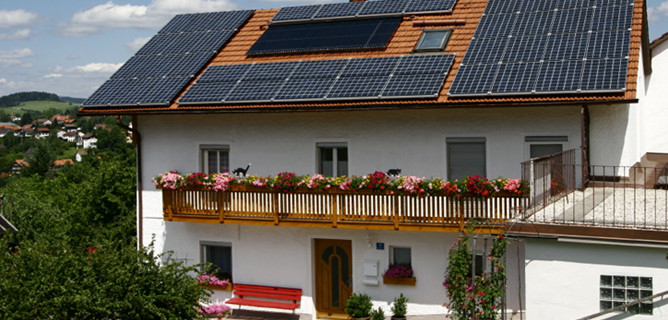 More homeowners and builders are interested in green building and want to choose energy efficient features for their homes, so it’s important to know what is fact and what is myth. Peter Yost of BuildingGreen LLC in association with GreenBuildingAdvisor.com addresses eight common green building myths.
More homeowners and builders are interested in green building and want to choose energy efficient features for their homes, so it’s important to know what is fact and what is myth. Peter Yost of BuildingGreen LLC in association with GreenBuildingAdvisor.com addresses eight common green building myths.
Myth #1: Green homes cost more than other homes.
Sustainable building often requires more expensive building materials, smarter technology and complicated systems than conventional building. But when thinking long-term, green building actually saves money because the materials won’t have to replaced as often. So while initial costs may seem like a lot, green building offers better value when you consider the life-cycle costs.
For instance, upgrading to energy efficient windows might cost more up front, but the reduced load on your heating and air conditioning system will help offset that cost over time.
Myth #2: Green homes look weird.
In the early days of green building, builders focused on features that touted self-sufficiency and lower costs, which often detracted from a home’s design or architecture. These days, green homes don’t have to look strange unless you want them to.
Virtually any home, regardless of home style, can have sustainable features. Solar shingles, for instance, can be incorporated directly into the building’s structure so they’re virtually invisible.
Myth #3: Green homes look weird.
In the early days of green building, builders focused on features that touted self-sufficiency and lower costs, which often detracted from a home’s design or architecture. These days, green homes don’t have to look strange unless you want them to.
Virtually any home, regardless of home style, can have sustainable features. Solar shingles, for instance, can be incorporated directly into the building’s structure so they’re virtually invisible.
Myth #4: Green houses can be too insulated or too tight.
Some traditionalists argue that houses need to breathe, and they caution against “too much insulation” and “building too tight.” But in reality, these are the least of our concerns.
Most homes have uncontrolled air movement that wastes energy and increases the risk of long-term damage to building components. This can be alleviated by identifying and sealing air leaks and adding insulation. To offset this tightness, homes need mechanical ventilation to ensure that a supply of fresh air is circulated.
Myth #5: You need solar panels to be truly green.
Solar panels were once the universal symbol for green building. But the reality is that sustainable building means integrating a variety of energy efficient solutions that work together — from heating systems to interior finishes.
When building green, focus on the house as a whole, not just particular green features like solar panels. Everyone working on the home, from the architect to the HVAC specialist to the electrician, should be involved in the green strategy. After all, will you be getting the most out of your solar hot water collectors and photovoltaic panels if you have leaky windows and poor insulation?
Myth #6: Low-flow toilets don’t work well.
After the federal government limited toilets to 1.6 gallons of water per flush, early models of the low-flow toilet were a flop. Times have changed, and homeowners have more options. Today’s redesigned low-flow models work as well or better than older water-guzzling models. High-efficiency toilets use even less water than standard low-flow models, some as little as 1.1 gallons. Dual-flush toilets, which have separate flush modes for solid and liquid waste, are another water-saving option.
Myth #7: McMansions can be green.
Whether or not a big house is green depends on how the building’s materials and resources are being allocated. For instance, a 10,000-square-foot house built for a family of four can’t be considered green, no matter how many sustainable features it has. But it would be green if 20 people lived in that same house.
Lowering consumption is an important benchmark in sustainable building, and that thinking extends to the materials that go into a house as well as the energy that’s required to heat and cool it.
The LEED for Homes rating system’s “neutral” size recommendations range from 900 square feet for a one-bedroom house to 2,850 square feet for a five-bedroom house.
Myth #8: “Green” is just a passing fad.
From kitchen cabinets to skylights to siding, consumers are looking for eco-friendly features for their homes, often paying premium prices for the extra value.
High energy costs, limited natural resources, awareness of global climate change, better understanding of building science and growing health concerns are all contributing to a lasting green movement.
The fact is that sustainable houses last longer, have fewer problems, are cheaper to live in and keep people healthier and happier. And who doesn’t want that to last forever.
Courtland Building Company would love to help you plan your green home, call us today: (281) 932-4494
Visit our website: www.courtlandbuildingcompany.com Follow Us on Facebook – Twitter – LinkedIn

